#lámhfada
Text
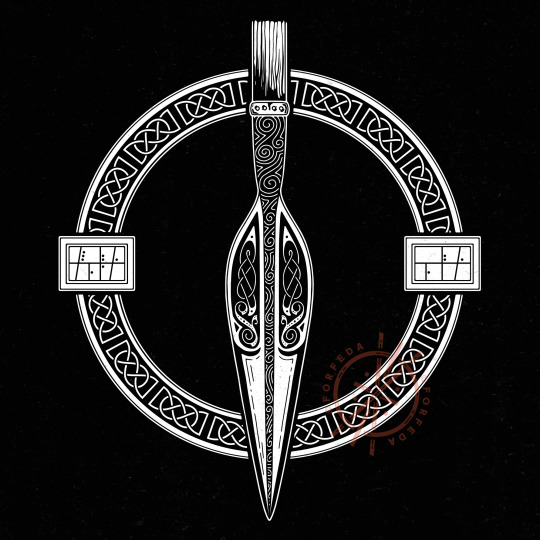
SLEG LUG
"Out of Gorias was brought the Spear that Lug had. No battle was ever won against it or him who held it in his hand."
The youthful Lugh Mac Ethlinn was a king and warrior of the Tuatha Dé, renown for his great skill in all manner of disciplines, which earned him the epithet Samildánach (master of every art). Among his many powerful artifacts, Lugh was said to possess a deadly magical spear that made him undefeatable in battle.
Based on historical Bronze Age Irish spearheads, this design features three major art styles found in Ireland: Neolithic spirals, Iron Age La Tène motifs, and Medieval knotwork. The name "Sleg Lug" is written in Brecor Beo, a variant of the ogham alphabet from the Book of Ballymote.
Part 2/4 of my Four Treasures series.
#celtic#celtic art#mythology#irish mythology#celtic mythology#folklore#ireland#sleg lug#lugh#lámhfada#spear#four treasures#tuatha de danann#celtic knot#knotwork#pagan#pagan art#gaelpol#artists on tumblr#forfedaproject
247 notes
·
View notes
Text
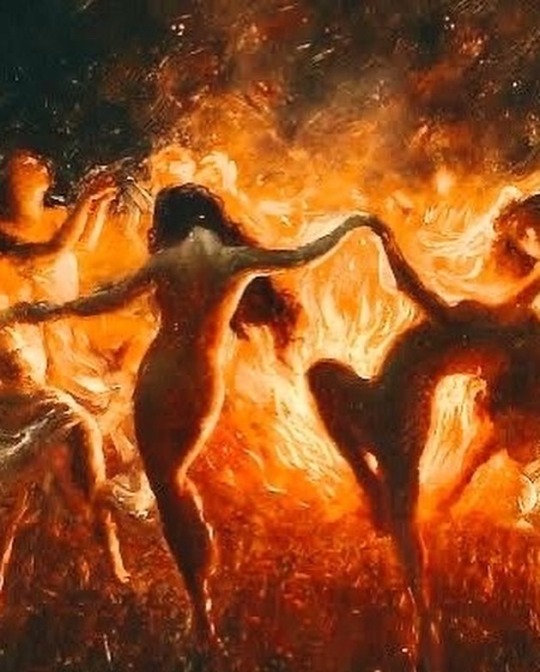


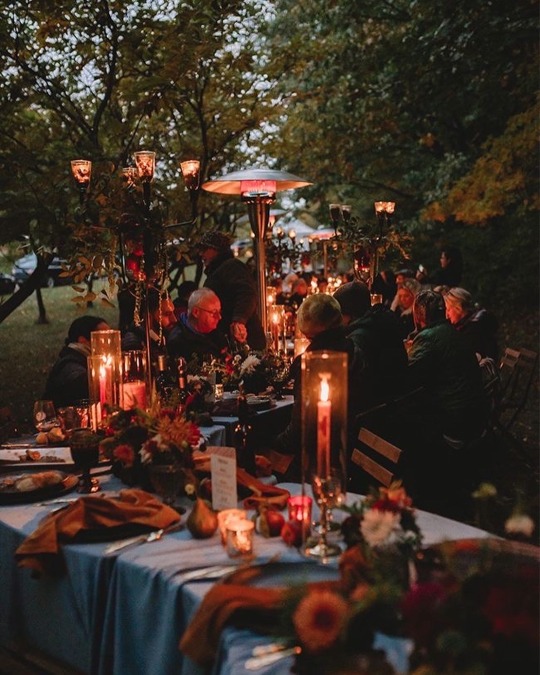

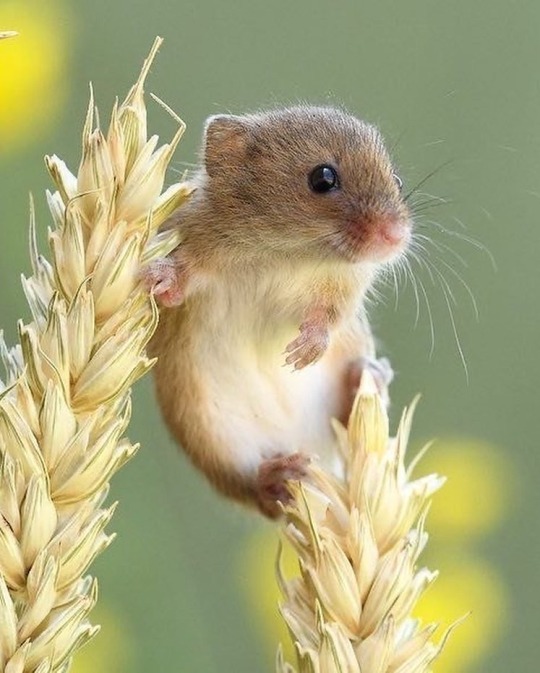




Wishing all a merry and bountiful Lughnasadh🌾🍂🌻☀️🌽🥖🍻🍎
Also known as Lammas, or First Harvest, the name of this festival as Lughnasadh is Irish Gaelic for “Commemoration of Lugh”. Some authors give the meaning as marriage, gathering or feast (in the name of) of Lugh. The meaning remains basically the same: Lugh is the Deity of Lughnasadh, and there is a feast.
Although Lugh gives his name to this festival, it is also associated with Lugh’s foster mother Tailtiu, who is said to have cleared the way for the introduction of agriculture in Ireland, thus linking Lughnasadh to the land and the harvest. It takes place on the 1st of August, a date internationally agreed upon, or on the day of the full moon next to this date, if you want to celebrate when the ancient Celts probably did. Since the Celtic day started with sunset, the celebration takes place on the evening before the calendaric date.
Lughnasadh marks the beginning of the noticeable descent of the Sun into the darkness of winter. From the connection between the Earth (female principle) and the Sun (male principle), the marriage of the Sky Father (Sun God) with the Earth Mother we celebrated at Bealtaine, emerge the fruits of the first harvest of the year. Lughnasadh is a time of joy about the first fruits. It is also a time of tension, because the dark days of winter are coming nearer, and most of the harvest is not brought in and stored away yet.
The God of the harvest is the Green Man (also known as John Barleycorn). He sacrifices himself every year in order to enable human life on Earth. In some areas his death is mourned with wreaths decorated with poppies or cornflowers.
The grain is cut, part of it goes into bread and nutrition, another part is stored away and used as seeds next spring, to create new life. Looking at that, thoughts about sacrifice, transformation, death and rebirth are also part of Lughnasadh. The Deities of Lughnasadh are Danu (Anu), the Mother of Gods and Men, and Lugh, the patron of scholars, craftsmen, warriors and magicians. Lugh is also known as Lugh Samildánach (the Many Skilled) and Lugh Lámhfada (Lugh with the Long Arm).
The essence of Lughnasadh is the joy of life under the knowledge that darker times are moving in. We take in the warming rays of the Sun and store their power for the times coming. At the time we celebrate the next festival, Alban Elfed, it will be fall and the warm summer days will already be a memory. Of course Lughnasadh is a very good time to express gratitude to the Gods and the Earth Spirits for their blessings and gifts that we are now receiving.
#lughnasadh #lammas #pagan #paganwitch #wheeloftheyear #druid #wiccan #witch #Harvest #celtic #celticfestival #celticgods #celticgoddesses #gratitude #abundance #celebration #thankfulness
186 notes
·
View notes
Text
Festivals & Holidays: Lughnasadh

Autumn draws near and with it, comes Lughnasadh.
Lughnasadh, pronounced “LOO-nah-sah” and known also as Lammas, is a Celtic festival that occurs from the 31st of July through into the 1st of August. It was observed fervently throughout Ireland, Scotland and the Isle of Man and marks the beginning of the harvest season.
Also called: Lúnasa (modern Irish), Lùnastal (Scottish Gaelic), Luanistyn (Manx Gaelic).
Lughnasadh is the celebration and ritual of the first harvest of fruit, wheat, and grain. This festival both acknowledges and celebrates the waning of light - Lughnasadh is the initiation of Winter preparation.
It is named for Lugh Lámhfada. and is in honour of his step-mother, Tailtiu who perished of exhaustion after clearing the fields of Ireland ready to be planted, sowed and seeded. Lughnasadh was originally a set of rituals, gatherings and funerary games (named Tailteann Games, or Áenach Tailteann) in honour of Tailtiu’s death and sacrifice.
✧ Symbols of Lughnasadh:
Wheat.
Corn.
Barely.
Oats.
Onions.
Grapes.
Straw dolls/straw bales.
Corn dolls.
Wood.
Tarot (strength).
✧ Colours of Lughnasadh:
Yellow.
Orange.
Red.
Violet.
Dark green.
Brown.
✧ Stones & Crystals of Lughnasadh:
Carnelian.
Cat’s Eye.
Citrine.
Marble.
Sale.
Granite.
Lodestone.
✧ Herbs of Lughnasadh:
Heather.
Blackberry.
Rose.
Sandalwood.
Goldenrod.
✧ Foods of Lughnasadh:
Bread.
Apples.
Corn.
Beer/Ale/Mead.
Grapes.
Onions.
Apricot.
Pear.
✧ ACTIVITIES FOR LUGHNASADH:
BAKING & COOKING: Sharing food is a good thing to do with each festival, especially those with agricultural ties. If you incorporate seasonal foods, and foods associated with the festival itself, it can be seen as an offering or as being done in honour of what you’re celebrating.
ENJOY NATURE: Lughnasadh is a time when the seasons are changing, so take this time to walk and enjoy the last that summer has to offer. Collect things whilst you walk to put on your altar if you have one.
AN ALTAR: if this is something you do, decorate your altar with some of the items mentioned in the list above. If you’re pagan and have a deity who corresponds with this holiday, leave an offering on your altar. In Lugh’s case, he is a god known for his skills in craftmanship and His ability to turn His hand to anything. He is also known for playing the harp, so anything you have crafted or that has taken skill to create will be well received by Him.
DECORATE: if you like, small decor changes can really get you in the mood and act as a celebratory act.
BONFIRES: Invite friends and/or family to a bonfire. Not only is Lughnasadh a celebration of waning light and of the god Lugh, it is a celebration of fire. Share plans to remove negative habits or influences from your life with your loved ones, burn representatives of negativity, drink to future prosperity and toast to Lugh.
Light a candle and do the same, if you cannot have a bonfire.
CRAFT: as mentioned before, Lugh is a god of craft and skill. Make something! Finish a project you’ve been putting off!
If you don’t want to do something in Lugh’s name, you can make dolls out of corn (a very traditional activity) and they can be left on an altar if you have one, used as decoration or turned into a poppet.
ATHLETICISM: The funerary games of Lughnasadh were its primary reason for creation. To honour this, you can do something on a small scale, such as jogging or yoga, or going to the gym, if you are able.
TRADING: Bake some bread and give it to your friends/family/coven in exchange for herbs, or some candles! That’s just an idea. but you get the gist of it.
Lots of trading took place at historic Lughnasadh celebrations, as they assembly for this season festival was always large.
FEASTING: Ties into the baking/cooking aspect, but using things that come from the first harvest is a good way to honour Lughnasadh and Tailtiu.
If you like my content and would like to help me keep providing free stuff for my gorgeous Ghoul Gang, you can tip your witch here: [Paypal].
44 notes
·
View notes
Text
Eivor Battles Balor of the One Eye
youtube
Eivor ingests a potion made by the druid Deirdre and faces off against Balor of the One Eye. He was a king of the Fomorii in Irish folklore, a group of beings that lived under the sea. His eye was said to cause blistering destruction when opened. Supposedly he was killed by Lugh Lámhfada in the Battle of Mag Tuired.
"Fjölnir" is one of Odin's many names, so Balor is likely an Isu. What's interesting is that Balor says he slew Cú Chulainn, the Hound of Ulster; in the Ulster cycle, Cú Chulainn was killed by Lugaid mac Cú Roí. What this could possibly suggest is that Lugaid was one of the Isu who reincarnated themselves into the human race. Given the animosity towards Eivor, it may have been Loki. Which makes me wonder if Eivor is even the first incarnation of Havi/Odin to be born, but perhaps the first to shake off the influence of Odin.
The Gáe Bolg was Cú Chulainn's spear, which I was pleased to get the first time around in the DLC because I was seriously disappointed when the Uí Néill artifacts just gave you his shield. Oh, and the spear is mostly why I almost immediately ran off to Ireland because I wanted to smite my enemies with lightning. 😂
7 notes
·
View notes
Text
Witches Sabbats: Lughnasadh
Autumn draws near and with it, comes Lughnasadh.
Lughnasadh, pronounced “LOO-nah-sah” and known also as Lammas, is a Celtic festival that occurs from the 31st of July through into the 1st of August. It was observed fervently throughout Ireland, Scotland and the Isle of Man and marks the beginning of the harvest season.
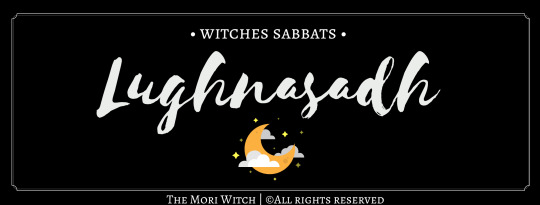
Also called: Lúnasa (modern Irish), Lùnastal (Scottish Gaelic), Luanistyn (Manx Gaelic).
Lughnasadh is the celebration and ritual of the first harvest of fruit, wheat, and grain. This festival both acknowledges and celebrates the waning of light - Lughnasadh is the initiation of Winter preparation.
It is named for Lugh Lámhfada. and is in honour of his step-mother, Tailtiu who perished of exhaustion after clearing the fields of Ireland ready to be planted, sowed and seeded. Lughnasadh was originally a set of rituals, gatherings and funerary games (named Tailteann Games, or Áenach Tailteann) in honour of Tailtiu’s death and sacrifice.
Some Symbols of Lughnasadh:
Wheat
Corn
Barely
Oats
Onions
Grapes
Straw dolls/straw bales
Corn dolls
Wood
Tarot (strength)
Runes (Eihwaz)
The Colours of Lughnasadh:
Yellow
Orange
Red
Violet
Dark green
Brown
The Stones & Crystals of Lughnasadh:
Carnelian
Cat’s Eye
Citrine
Marble
Sale
Granite
Lodestone
The Herbs of Lughnasadh:
Heather
Blackberry
Rose
Sandalwood
Goldenrod
Important/Celebrated Foods of Lughnasadh:
Bread
Apples
Corn
Beer/Ale/Mead
Grapes
Onions
Apricot
Pear
Activities to be done during Lughnasadh:
Baking/Cooking: Sharing food is a good thing to do with each sabbat, especially those with agricultural ties. If you incorporate seasonal foods, and foods associated with the sabbat itself, it can be seen as an offering or as being done in honour of what you’re celebrating.
Take some time to enjoy nature: Lughnasadh is a time when the seasons are changing, so take this time to walk and enjoy the last that summer has to offer. Collect things whilst you walk to put on your altar if you have one.
Construct an altar: if this is something you do, decorate your altar with some of the items mentioned in the list above. If you’re pagan and have a deity who corresponds with this holiday, leave an offering on your altar. In Lugh’s case, he is a god known for his skills in craftmanship and His ability to turn His hand to anything. He is also known for playing the harp, so anything you have crafted or that has taken skill to create will be well received by Him.
Decorate your home: if you like, small decor changes can really get you in the mood and act as a celebratory act.
Bonfires: Invite friends and/or family to a bonfire. Not only is Lughnasadh a celebration of waning light and of the god Lugh, it is a celebration of fire. Share plans to remove negative habits or influences from your life with your loved ones, burn representatives of negativity, drink to future prosperity and toast to Lugh.
Light a candle and do the same, if you are not yet an outed witch.
Craft: as mentioned before, Lugh is a god of craft and skill. Make something! Finish a project you’ve been putting off!
If you don’t want to do something in Lugh’s name, you can make dolls out of corn (a very traditional activity) and they can be left on an altar if you have one, used as decoration or turned into a poppet.
Acts of athelticism: The funerary games of Lughnasadh were its primary reason for creation. To honour this, you can do something on a small scale, such as jogging or yoga, or going to the gym, if you are able.
Trading: Bake some bread and give it to your friends/family/coven in exchange for herbs, or some canldes! That’s just an idea. but you get the gist of it.
Lots of trading took place at historic Lughnasadh celebrations, as they assembly for this season festival was always large.
Feasting: Ties into the baking/cooking aspect, but using things that come from the first harvest is a good way to honour Lughnasadh and Tailtiu.
#the mori witch#lugh#lughnasadh#lammas#lunasa#sabbat#sabbats#witches sabbaths#witch's sabbaths#holiday#festival#august 1st#wheel of the year#pagan#pagans#paganism#witch#witches#witchcraft#magick#magic
7K notes
·
View notes